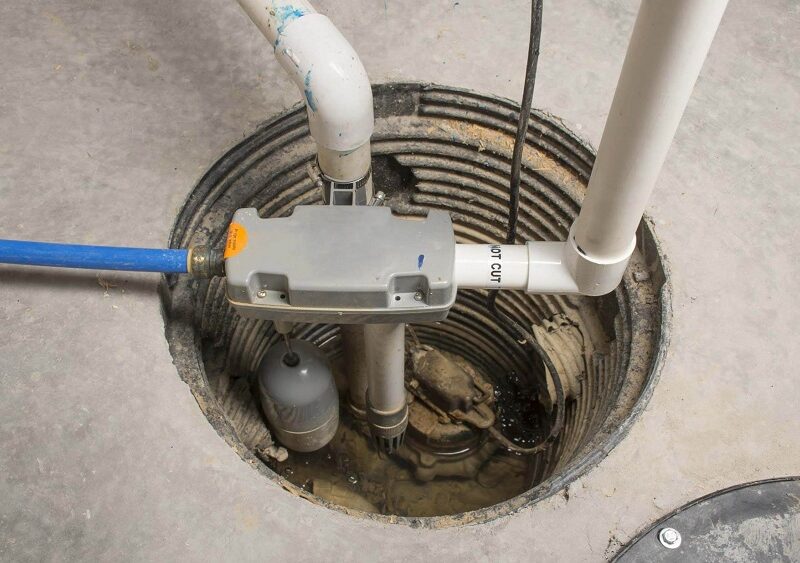Your Boston home deserves the best love and care that you can offer, and that means taking care of your sump pump to keep it functioning properly. When a sump pump isn’t maintained, it may not work as it is intended to, which can leave water in the basement and lead to other issues as well.
If you have a sump pump in Boston, or any other city, check out these maintenance tips to keep it in working order.
1. Know Your Sump Pump System
Not every sump pump is created equally, and you need to understand your system and any potential limitations that come with it. Understanding your system is the first factor, because it tells you what to watch for and whether you may be close to needing a new system.
Here are the basic things to familiarize yourself with:
- How old is your pump?
- Where and how can you get replacement parts?
- Are there existing issues to check out or take care of?
Even when you have a brand-new sump pump, you should keep your manual somewhere just in case you ever need it. Whether you have a digital copy or a printed manual, this could come in handy in the future.
If you’re not sure where to get the information for your pump, try looking for a model number and the brand name to see if you can find any pertinent information from those details.
2. Test Your Sump Pump Periodically
We go through spurts of heavy rain and snow in Boston, but we also go through dry spells. Sometimes you don’t know there is an issue until the sump pump fails. However, it’s a good idea to test your sump pump on occasion to be sure it is functioning as it should.
Periodic testing will help pinpoint issues before something else occurs. When testing, be sure to listen and take note of any oddities or concerns.
3. Identify Signs of Sump Pump Issues
When you know the signs of an issue, you can be proactive about problems and get them handled right away. Knowing the signs of the small things may just catch them before you run into total failure or end up with major water damage during rain or snow.
These are some common signs of a problem with your sump pump:
- Sump pump makes strange or unusual noises
- Rattling or grinding during operation
- Excessive vibrations from the motor
- Sump pump turning off and on
- An oil leak
Any of these issues are indicators that something isn’t right and a repair needs to be made. If you’re comfortable handling the repairs on your own, that’s fine. Otherwise, you should plan to bring in a company to service and maintain the sump pump.
4. Sump Pump Cleaning is Essential
You should be cleaning your sump pump and the pit or basin of the pump a couple of times a year. Keeping the sump pump system clean and cleaning out the basin leads to optimized performance. It also helps prevent build-up or debris that might clog or cause issues with the pump system.
You can follow these steps for basic cleaning practices:
- Power off and unplug the sump pump. No water draining appliances should be used while the pump is powered down.
- Rinse your pump with a garden hose and scrape off any debris that is caked on. Clean out the pit as well.
- Vacuum out the basin or pit with a wet vac to help clear unwanted debris.
- Inspect all pieces of the pump to determine whether anything may need to be repaired.
- Dry the sump pump completely, put it back together, power it on, and do a test run to be sure everything is functioning.
5. Protect Your Sump Pump System
Sump pump systems use equipment that can be harmed if it isn’t protected. Leaving it exposed makes it more susceptible to various debris, sediment, or even lint that can get into the system or down in the basin.
It’s a good idea to ensure your system is properly protected and the basin is covered with a covering that fits properly. Most of the time, these coverings are part of sump pump installation and they will have cut-outs for drainage, wiring, and stands as needed.
6. Inspect the Discharge Line
When you are doing your regular cleaning or inspections, it’s a good idea to take a closer look at your discharge line. If your sump pump seems to be draining too slowly, check that discharge line.
You want to look for clogs or blockages that could lead to a clog and cause the sump pump to fail or back up. Make sure you take a look at drainage pipes and take appropriate steps if you identify a blockage.
7. Backup Sump Pumps
Having a backup sump pump installed could be useful in some cases. You can also have a battery backup or water-generated backup system. This is useful in case the electricity goes out. You want the sump pump to be able to run even when the lights are out! Otherwise, you’re going to end up with water in the basement.
8. Call Professionals for Sump Pump Repairs or Replacement
Relying on the experts to help you with Boston sump pump inspection, repairs, scheduled maintenance, or even installation and replacement is essential. The professionals know how to properly care for your existing system. They will also be able to provide you with any tips or alternatives when it’s time to repair or replace your sump pump.











